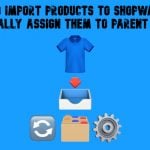Composable Commerce: A New Concept in eCommerce

Our digital world is filled with new words and jargon. There is a chance of just missing out on something brand-new and interesting because they arrive every week. Composable Commerce is one such recent innovation that is currently on the eCommerce radar. On June 18, 2020, Gartner released research called Composable Commerce to alert business leaders about this next paradigm change in software architecture. This is a term that is new to the business, but what does it imply, and why is it important? What exactly is this new creature, and what advantages does it provide you? In order to clear up any confusion regarding what Composable Commerce is, we will go through all the fundamental concepts in this post and analyze this subject.

Table of contents
Composable commerce: what is it?
As we previously said, Gartner coined the term “composable commerce” in research from June 2020. That was how it all began. Composable Commerce encompasses a number of additional, more general principles while being mostly interchangeable with MACH architecture (Microservices, API first, Cloud native, and Headless). By emphasizing packaged business capabilities, or PBCs, Composable Commerce takes this strategy a step further. It leverages the use of microservices to achieve this goal, solving business challenges.
Businesses can essentially use a variety of packaged applications and services through composable commerce to deliver an agile technology stack. As your business needs to develop or change, you can quickly add, modify, or remove applications without affecting the rest of your infrastructure.
As a result, you have total flexibility in how you may provide seamless and customized consumer experiences, irrespective of the channel.
Why should you give Composable Commerce a try?
Composable approaches, which deliver many valuable characteristics, are the industry’s future, according to Gartner.
The benefits that Composable Commerce offers are listed below:
- Modular design. Each component is a stand-alone unit that can be used for standalone deployment.
- High flexibility. Agility is facilitated through the use of contemporary, adaptable technologies and methodologies. Microservices, APIs, cloud, headless, and Jamstack (JavaScript, APIs, and markup language) architectures are some of these for composable commerce.
- Using open standards. Customization is also encouraged in commerce via open standards, integration techniques, and extensible models. However, in this instance, it’s the customization of exclusive and third-party API services. Technology providers, the company itself, or its solution and integration partners can design these services.
- Remarkable agility. Composable Commerce offers pre-built components and commercial features, allowing for fast integration and market deployment.
- Business centricity. Composable commerce includes all the tools required for teams to have complete control as they “assemble” separate services into an all-encompassing solution that meets complicated and dynamic requirements, promotes iteration, and reduces the cost and risk of innovation.
- Fast Integration. Composable Commerce consists of a variety of packaged business capabilities (PBCs). Using pre-built ecosystem connectors, PBCs can be coordinated in order to address more complicated business problems.
- Simple Testing. Connect to, configure, and test numerous integrations to keep your versatility. Try out new features and just keep the best option that meets your demands.
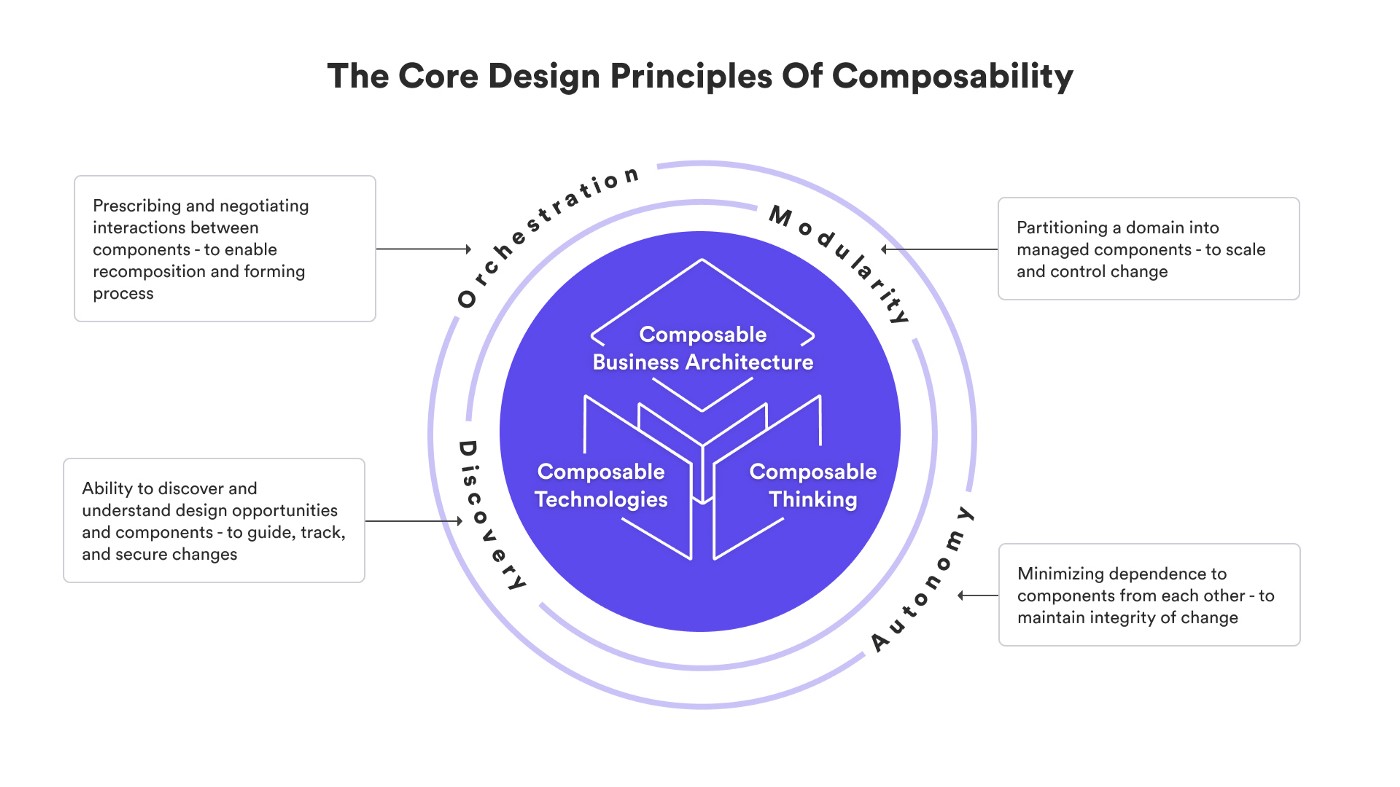
How did the eCommerce sphere get to this point?
We must delve a little deeper into the history of our digital world in order to comprehend it better. Follow our journey to Composable Commerce. Additionally, it will clarify precisely what is innovative and significant about this solution.
From monolithic platforms to microservices, we’ve come a long way. Both of these extreme architectural patterns have many advantages and many disadvantages. By abandoning the “sizeism” of a particular vendor’s product offering and concentrating on providing value through packaged business capabilities, Composable commerce seeks to offer the best of both worlds and minimize the disadvantages.
Initially were monoliths. They have a front- and back-end system that is tightly connected by definition. The system may get more complex over time as a result of any code modifications, especially as company capabilities grow and technology advances. One of the reasons they were unable to give your routine flexibility and diversity was this. You couldn’t quickly alter the situation without running the risk of ruining the entire edifice.
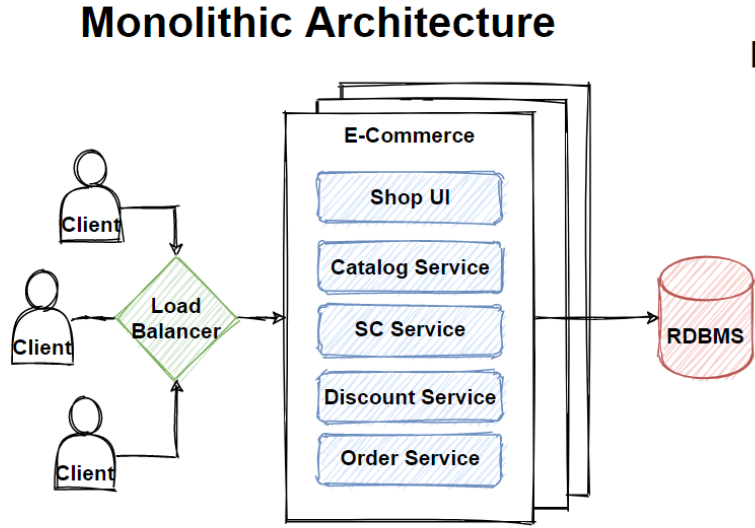
Then comes Headless. It allows the front-end presentation layer and the back-end eCommerce engine to be independently operated. The theme or template that determines what users see is often referred to as the front-end (or “head”) of simple eCommerce websites. Because you can link a content management system, digital experience platform, progressive web app, or even an Internet of Things device, headless allows additional flexibility. The front end can then be changed and swapped out without affecting crucial e-commerce elements like checkout and payment security.
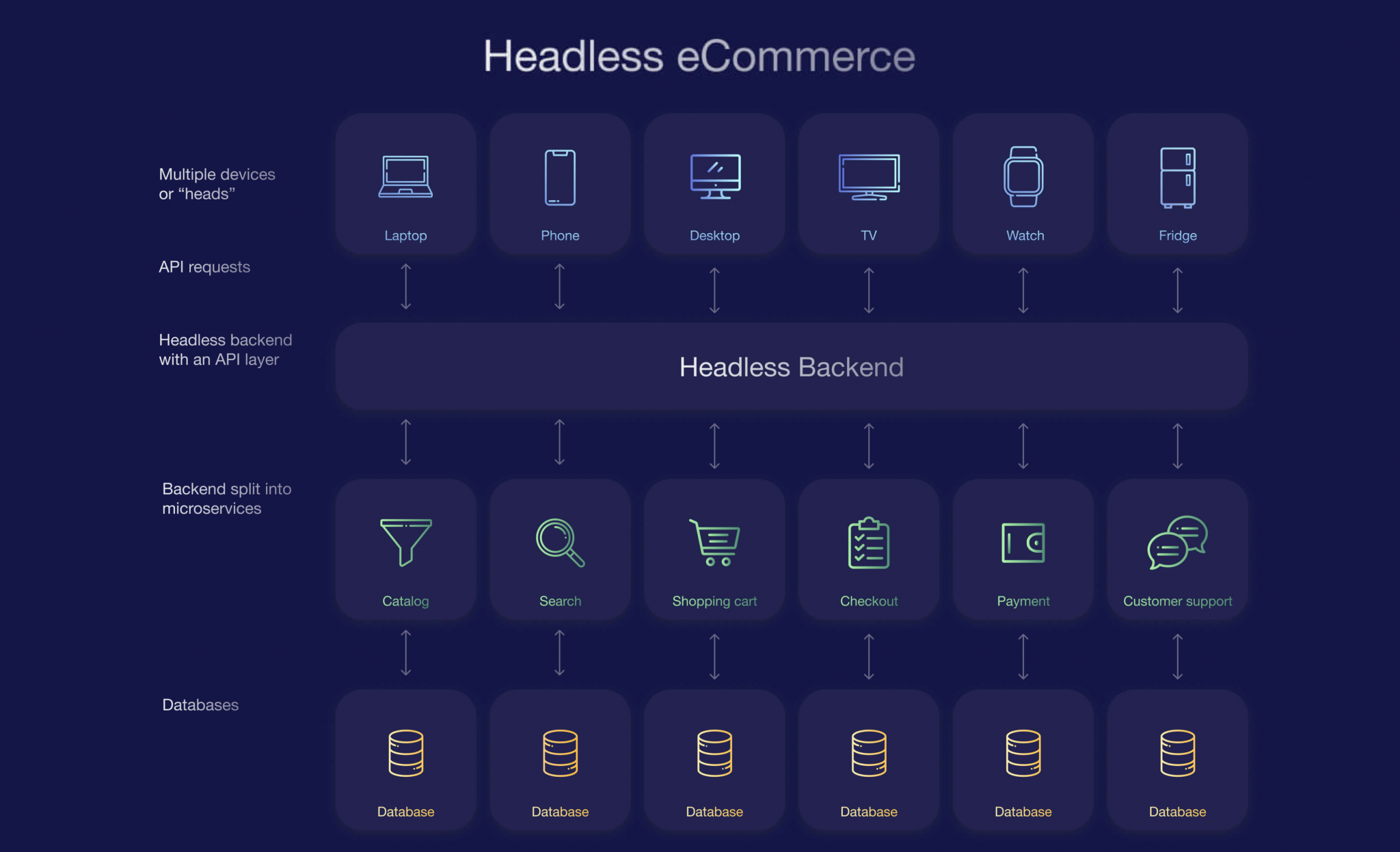
With headless, some of the parts of the system are decoupled — but in a true microservices architecture, the platform and service-oriented architecture are fully decoupled. Businesses can use microservices to integrate the finest individual services to meet their needs. To develop complicated business transactions, these components communicate using APIs. They can also function separately, thus changing out one piece of the jigsaw won’t have an effect on the other parts of the system. Its moniker in the modern era of internet commerce is MACH (Microservices, API-first, Cloud, and Headless).

And finally, there is Composable Commerce. Simply said, composable commerce begins with headless commerce. The transition to becoming a composable enterprise may be underway for organizations that have taken a headless approach. When a platform’s front end and back end are connected through APIs and run independently of one another, headless commerce is the result. Composable commerce emphasizes modularity even further and decouples services like search, payments, and personalization that address business issues.
Each component is removable, scalable, and able to undergo ongoing improvement. Maximum organizational agility is made possible by the combination of various packaged business capabilities (PBCs), whether they were acquired outside the company or created in-house. These PBCs’ development, curation, dynamic assembly, and reassembly do not constitute new architecture.
First open source platform as a perfect example of composable commerce
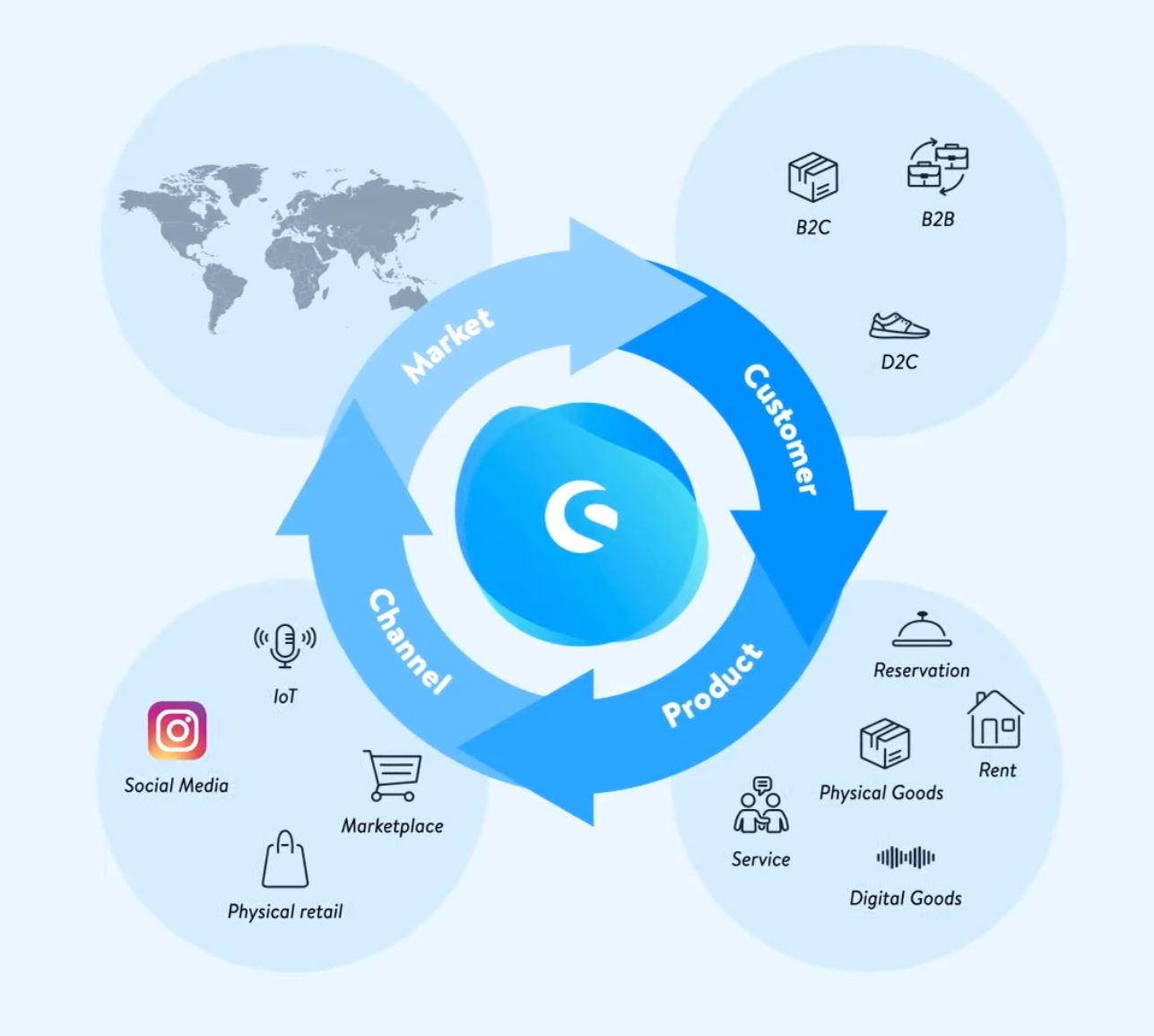
This is . It is the first open-source software platform and a prime example of composable commerce that prioritizes APIs. It always comes down to using the best and most specialized tools, and Shopware makes it happen. This is true whether you refer to it as headless, composable commerce, or best of the breed. You can read our review of Shopware 6 – here.
Packaged Business Capabilities
Understanding how Composable Commerce operates depends heavily on this section.
Composable commerce is based on packaged business capabilities (PBCs). You can use these parts in your architecture by picking them up. Similar to microservices but not limited in size, they can provide micro or macro capabilities and aren’t as fragmented or difficult to develop, deploy, and support as microservices.

Given their lack of rigidity in comparison to monolith or complicated microservice architectures, packaged business capabilities cover a wide range of feature verticals and are simple to consume, integrate, and use. You can use any of the hundreds of Composable Commerce components listed below to build customer experiences and organizational structures for your own firm.
Pros and Cons of Composable Commerce
We will examine the advantages and disadvantages of this solution in this section. Let’s start with the pros.
Pros
Many companies that advocate the coolness of composable commerce believe that this option has enough flexibility to work with information quickly, allowing them to outperform competitors and provide customers with comfort.
Create unique, end-to-end customer experiences
According to statistics, fewer and fewer people begin their journey with a search engine. Today, social media drives every aspect of online buying. This situation calls for a degree of flexibility that just wasn’t required or practicable in the early days of e-commerce. Here is where composeable commerce shows up. Possessing this special flexibility can help you solve problems and outperform other businesses.
Quickly adapt to evolving business needs
Rapid and efficient techniques of adaptation are required when dealing with unanticipated issues like COVID or other worldwide issues. It is quite challenging to develop swiftly and without compromising the entire procedure for monolithic systems. You can only address the feature in question with a modular, best-in-breed strategy without running the risk of affecting other business capabilities in your ecosystem.
Avoid becoming tied to a single vendor
Monolithic software providers limit the flexibility of their customers. A superior product from a different manufacturer has been found? Otherwise, you’ll have to pay for a possibly pricey migration or have to wait until your contract expires. When it makes sense for your company, you can switch components in and out of a modular structure.
Cons
Composable solutions, of course, provide a lot of benefits, and many large-scale enterprises are moving in that way. In that route, many large-scale corporations are moving. However, there are some potential obstacles and difficulties you’ll need to take into account, especially if you’re considering a complete microservices strategy as opposed to a headless ecommerce platform.
Organize numerous merchants
You have a lot of work to do with the suppliers’ nuances and specifics when using the composable option. If the monolith has any advantages, it’s that you only have to deal with one vendor. Negotiating business subscription terms, evaluating terms and conditions, and integrating with the software all take much longer when there are more than a handful of providers involved. You have a lot of work to do with the suppliers’ nuances and specifics when using the composable option.
Have extensive knowledge of the digital world
It is challenging to link this to the obvious drawbacks, yet this issue might prevent many businesses from adopting this approach. A smart organization with a digitally developed workforce and strong cross-functional collaboration are essential for the complicated model of composeable commerce.
FAQ
Here, we’ll cover the most often asked questions and their corresponding answers.

Why is Composable Commerce a stronger alternative to existing platforms?
Traditional e-commerce platforms are typically complex and time-consuming to build and update. It is impossible to swiftly deploy new features that are desperately needed because all the components that make them up are interdependent. The entire system must be upgraded in order to upgrade one functionality. Contrarily, composable commerce offers flexibility and customization. Functionalities are separate, so you can select the one that best suits your company. It is simple to accelerate innovation because you can essentially swap out individual parts whenever you need to, making it simpler to respond to changing consumer demands and maintain competitiveness.
Is it reasonable to move to Composable Commerce at this time?
To that, we say “yes”. Today, the ability to quickly adjust to changes is a necessary talent to succeed in the market. Companies will be able to be flexible and adaptable while establishing improved procedures, satisfying consumer expectations, and responding to market demands by adopting a composable approach.
Can I benefit from composable commerce?
It’s possible that no business would be a good fit for composable architecture. You can decide if this option is best for you by looking at the conditions listed below.
- Size of the company. Small businesses do not typically have complicated business demands that need a comprehensible answer.
- Digital competence. A business will benefit from a composable commerce solution if it has a strong online presence and in-house technological knowledge. It takes a high level of expertise in this industry to deal with this issue. Otherwise, an out-of-the-box approach can be a better option.
- Difficulty. If a company has a small product catalog, has no plans to grow, or just engages in D2C or B2C transactions, then the scalability and functionality of composable commerce may not be required.
What distinguishes Headless from Composable Commerce?
Only the front- and back-ends are separated in headless commerce; the back-end remains sophisticated while the front-end is adaptable to shifting market demands. Composable commerce takes things a step further by fusing separate elements into a highly curated and adaptable framework.
What are PBCs?
PBCs (packaged business capabilities) are features that carry out particular business functions. The term “software components that represent a well-defined business capability” is used by Gartner to describe them. These pre-packaged business operations are the building blocks for bigger software suites, which are connected through an API.
What advantages do composable commerce offer B2B companies?
- Installing new integrations is simpler and faster than adding the customary time-consuming add-ons, which require infinite construction and configuring.
- Testing is easy, and it enables you to experiment with new features to see which ones best suit your requirements.
- It takes less time to create and update the software.
- Integration and maintenance-related risks and expenses are kept to a minimum.
- Thanks to a carefully curated list of pre-configured apps, choosing the best-of-breed integrations are made simpler.
Does this solution have any drawbacks at all?
There are a few minor issues with it. The composable commerce model has disadvantages, including managing various vendors and technologies and creating a unified user experience to connect vendor-specific microservices.
Sources List
Below, we’ve created a list of all the websites and publications we’ve utilized to research and access resources on the subject of consumable commerce.
from Bolt.

from Elasticpath.

from Amplience.

from Salesforce.

from BigCommerce.

from Bloomreach.

Moreover, we wish to draw your attention to the Gartner piece independently. After all, they were among the first to coin the phrase and make it well known. It may be read .




